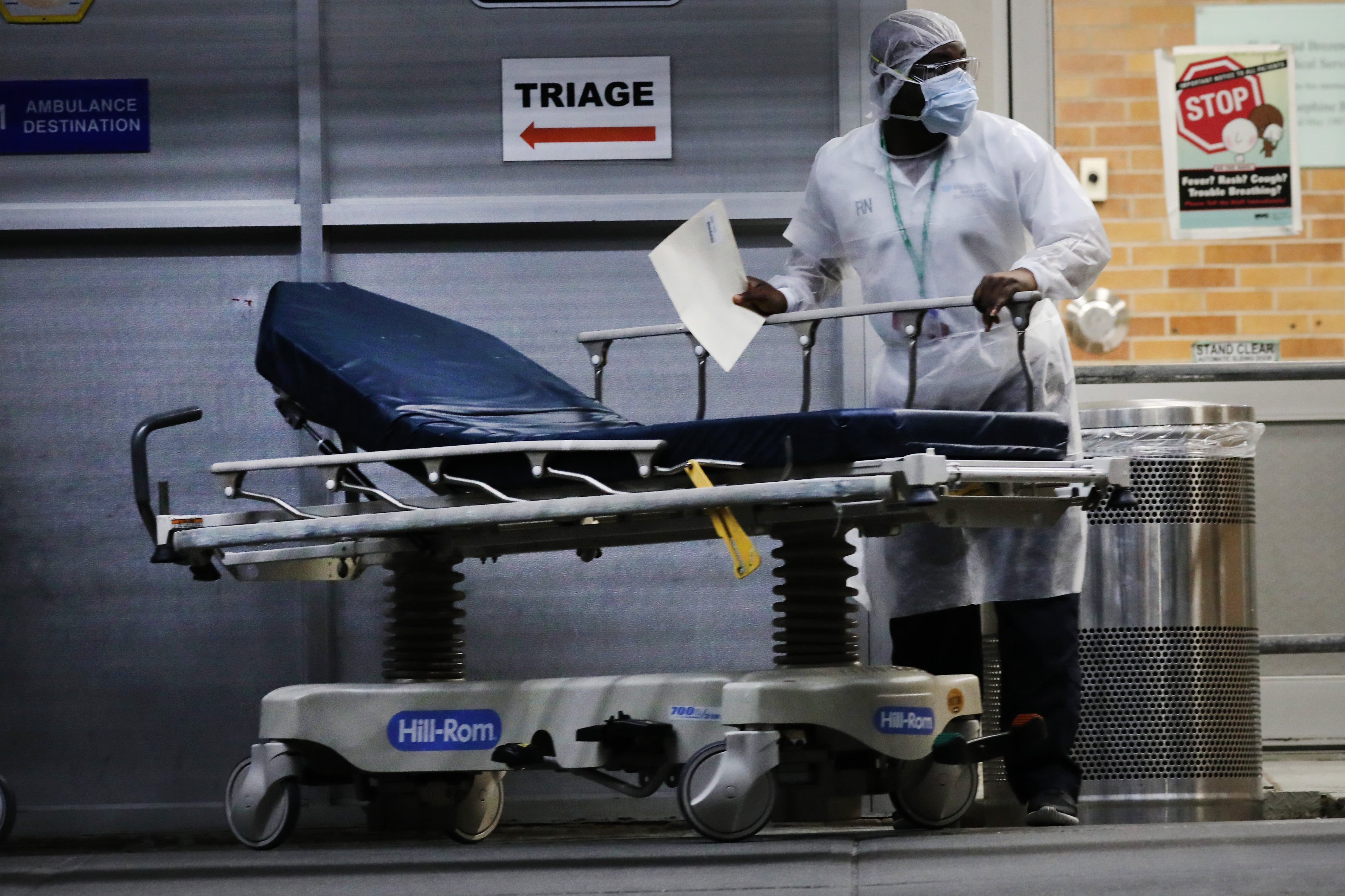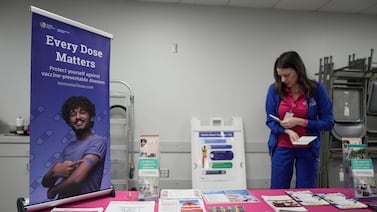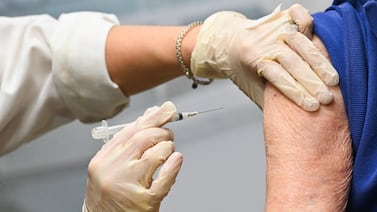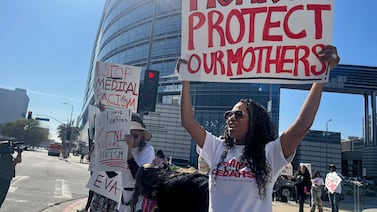This is a guest essay for Healthbeat. Public health, explained: Sign up to receive Healthbeat’s free national newsletter here.
In January 2020, countries around the world were forced to confront a brand new virus. We had no prior understanding of how it spreads or what it does to the body, and we lacked tests, drugs, and vaccines for it.
Five years later, it is abundantly clear that governments at all levels made missteps in how they managed what became the Covid pandemic, and, given the high likelihood of future pandemics from emerging infectious diseases, it is important to re-examine what we got right and wrong, so societies can respond more effectively the next time.
In recent months, a particular narrative has gained momentum. This narrative — often labeled Covid revisionism — suggests that the U.S. government’s response to the virus did more harm than good, that efforts to slow transmission through physical distancing, masks, and vaccines were misguided or excessive. Had we simply accepted the virus’ spread, society would have been better off, some argue.
The narrative that the United States should have had fewer or different virus control measures glosses over some important considerations. From April 2020 to May 2021, I served as the lead health adviser to the New York City mayor for the Covid response. Based on my experience, I offer six questions for everyone to consider.
1. How much power did public health experts actually have over elected leaders?
A common concern raised by those critical of Covid control measures is that a small number of scientists and public health officials exerted too much power. A recent New York Times podcast said one major problem with the U.S. pandemic response was “too much power was accorded to narrow experts in public health and epidemiology.”
In practice, however, virtually all significant policy decisions — particularly those affecting business closures, schools, and masks — were made by elected officials. Governors and mayors consulted with health experts within government and academia, but they were almost always the ones weighing the trade-offs, exerting their legal authority to restrict personal liberties, and taking responsibility for the choices that were made.
To suggest otherwise overlooks how democratic governance actually functioned during the pandemic. In the United States, public health officials at state and local levels report to a democratically elected executive or, in some situations, a board of public representatives. These health officials made recommendations, and elected leaders chose whether and how to implement them. If we want to improve our response to future infectious disease emergencies, it is important to scrutinize how these leaders used expert advice — not paint an inaccurate picture of technocratic overreach.
2. Were the social and economic costs ignored?
Another claim we often hear is that only a small group of dissenters were willing to talk about the mental health effects, economic damage, or social disruption caused by Covid control measures. These dissenters argue that public health officials were singularly focused on lives saved and failed to consider the loss of livelihoods.
In my experience, this was never the case. When I served in City Hall in New York, almost every major discussion I had with government officials involved me presenting multiple scenarios. I would start with the extreme scenario of us attempting to avert every illness and death, contrast that with the opposing extreme scenario of taking no action, and then discuss various policy options between these two.
Every policy option presented to the mayor was developed by a diverse team that included public health experts and people with backgrounds in law, policy, business, and community engagement. We spent countless hours debating how to protect vulnerable populations, support small businesses, and address acute and long-term mental health harms of these measures. Every decision involved excruciating trade-offs, and no one took them lightly.
Criticism is vital. Some measures seemed irrational — for example, liquor stores stayed open, while schools closed — and some measures lasted too long or were applied unevenly. These were the result of a messy democracy, reflecting a need for elected officials to balance competing centers of power in our society. To suggest that these consequences were ignored doesn’t reflect the reality I witnessed, where leaders agonized over these issues.
3. How should society think about acceptable loss of life?
Perhaps the most difficult — and least discussed — question is this: How many deaths are acceptable in a public health emergency? There is no simple or comfortable answer. Every pandemic policy requires balancing lives lost against the costs of prevention.
Those who supported strict control measures prioritized preventing illness and death. The rationale for this argument was straightforward: We have technologies to address poverty and depression from virus control measures; we do not have a technology to resuscitate the dead from the virus; and restrictions can be progressively lifted as vaccines and treatments become available.
Most important, as I have written elsewhere, how much a society should sacrifice to avert one death is not a question to be answered by scientists or epidemiologists. It should be answered by democratically elected leaders. These are decisions about values: How much is a life worth, and what responsibility do I have as an individual and does my government have overall for protecting a person’s life?
While it is ethically sound to argue that government should prioritize liberty over public health, I often hear Covid revisionists make an alternative argument. They try to impugn scientific understanding or epidemiologic statistics — questioning death estimates, vaccine effectiveness, or studies that show the risk of Covid to cardiovascular health — without wrestling with the more difficult question: If the scientific consensus is, in fact, accurate, do we still believe that fewer restrictions are acceptable?
To have an honest reckoning, we must be explicit about our values. Just as those advocating for strict measures made it explicitly clear that they prioritize averting deaths over personal liberty, the contrarians should be explicit in saying that they accept deaths as the cost of preserving liberty — and be willing to say exactly how many deaths are acceptable.
4. What was the alternative to stay-at-home orders when hospitals were overwhelmed?
One of the most sobering realities of spring 2020 was the strain placed on hospitals. In New York City, refrigerator trucks lined the streets to store bodies. Emergency departments were filled beyond capacity. Health care workers pleaded on social media with the public to stay home, because the system could not handle more patients. Many severely ill people, sadly, took this message to the extreme and died at home without seeking care.
Some critics argue that younger, healthier people should have been allowed to go about their lives during this time. But what would that have meant in practice when the health care system was already on the brink? Would we have told people that, if they got sick or injured, care might not be available? That their grandparents, neighbors, or co-workers might die unattended? That there may not be any space in the emergency department for young and healthy people if you are in a car accident or break your leg on the basketball court?
If we’re rethinking the response, it is worth asking what options we realistically had when we could not build more hospital beds or staff those beds safely, when the very infrastructure of care was at risk of collapse.
5. Should long-term health effects be part of the conversation?
The dominant focus in many debates about Covid policy is acute outcomes, such as hospitalizations and deaths. But, over time, we’ve learned that the virus can cause significant long-term health problems: heart attacks, strokes, clots, and a debilitating, poorly understood condition broadly referred to as “Long Covid.”
These conditions affect millions of Americans and have real consequences for people’s ability to work, care for families, and enjoy daily life. If we had known more about these long-term impacts in 2020, would that have changed how we weighed risks and benefits?
Any honest reassessment of the pandemic response should include these effects in the equation. Ignoring them presents an incomplete picture of the harm Covid can cause.
6. Do those who died from Covid get a voice in our reassessment of the past?
Finally, it is worth reflecting on who is not part of today’s debate: the millions who died. Survivor bias is powerful. It’s easy to criticize restrictions when you were lucky enough to come through the crisis without death or disability. I suspect many who died of Covid would have welcomed more efforts to protect their lives.
Keeping society functioning during a pandemic requires more than just protecting those fortunate to survive. A large percentage of the population had risk factors that put them at greater risk of Covid complications, and many of these still had to serve as “essential workers.”
Another group of advocates — some of whom have been diagnosed with Long Covid or who have medical conditions that put them at higher risk of Covid complications — argue that the United States did too little to contain the virus during the peak of the pandemic and continues to do too little to protect vulnerable populations.
There is no single right answer to how societies should handle pandemics. Every approach will involve trade-offs, regrets, and a need for humility. I used to tell colleagues and reporters that all options before us are bad and that we are trying to choose the least bad path forward. Each decision ideally starts with science, but turning science into policy requires a complex assessment of benefits, harms, feasibility, acceptability, affordability, legality, and ethics.
It is healthy in a democracy to challenge consensus, to debate what went wrong during the peak of the pandemic, and to listen to those who felt unheard or harmed by policy decisions. As we do so, we should also be wary of oversimplified narratives. The truth of the Covid response is more complex than either triumph or failure. As we reflect, we must hold space for different perspectives — while also insisting that those perspectives wrestle with the full scope of the crisis, not just the parts that fit our preferred narrative.
Dr. Jay K. Varma is a physician and epidemiologist. An expert in the prevention and control of infectious diseases, he has led epidemic responses, developed global and national policies, and implemented large-scale programs that saved hundreds of thousands of lives in Asia, Africa, and the United States.







